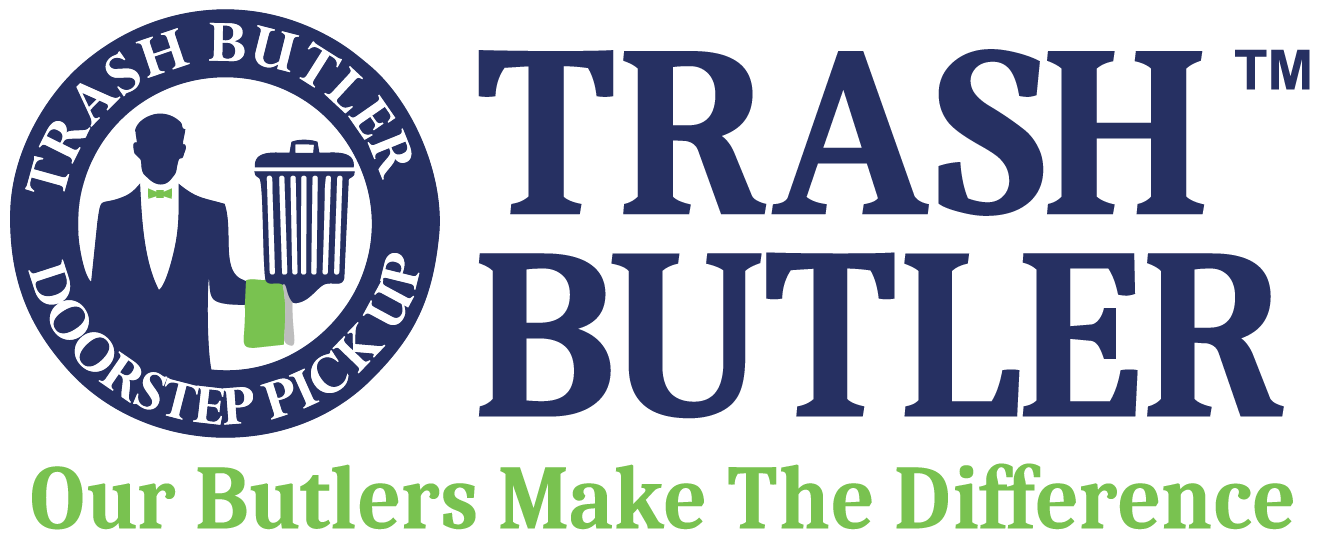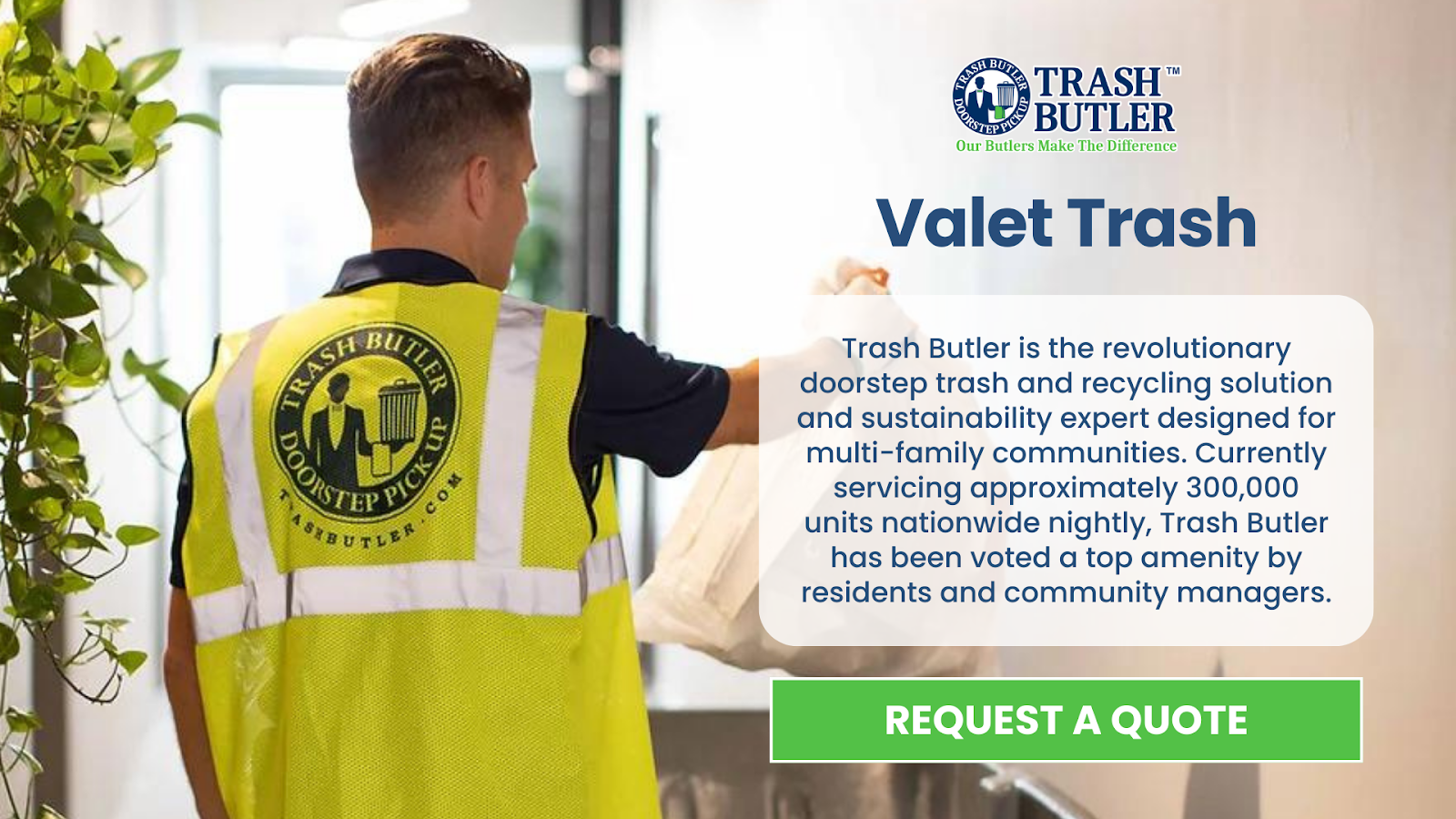Key Takeaways:
- Urban Apartments Can Compost Too: Despite space limitations, solutions like vertical composting systems, Bokashi composting, and community composting areas make composting achievable in urban multifamily properties.
- Engaging Residents is Key: Successful composting programs require resident participation. Strategies like educational sessions, user-friendly systems, and community events can boost resident awareness and participation.
- Odor and Pest Control are Manageable: Maintaining a carbon-nitrogen balance, using enclosed bins, and regular monitoring can minimize odor and pest problems associated with apartment composting.
Are you a property manager or resident in an urban multifamily community looking to adopt sustainable practices? Composting offers an eco-friendly solution to managing organic waste, but urban settings bring unique challenges.
The process can be daunting, from limited space and logistical complexities to ensuring community engagement. However, with thoughtful strategies and innovative solutions, multifamily properties can successfully implement composting programs that benefit both the environment and residents.
In this article, we’ll explore the challenges urban multifamily properties face in composting and provide practical solutions to make it a viable and sustainable practice.
What Is Composting, And Why Is It Essential For Apartments?
Composting is a natural process that transforms organic waste—such as food scraps, yard waste, and biodegradable materials—into nutrient-rich soil. This process involves the decomposition of organic matter through the activity of microorganisms like bacteria, fungi, and decomposers like earthworms. Over time, waste materials break down, producing a dark, crumbly substance called compost that can enrich soil in gardens, landscaping, and even indoor plants.
Composting involves balancing two main components: greens (organic waste with a high nitrogen content, like food scraps) and browns (carbon-rich materials like leaves, paper, and cardboard). Properly managed composting encourages decomposition while minimizing odors and pests.
Waste Reduction
Apartments, particularly urban ones, generate significant amounts of organic waste. Composting helps divert this waste from landfills, reducing the burden on overfilled waste management systems. By turning food scraps and yard waste into compost, apartment communities can significantly lower their overall waste output.
Environmental Benefits
Composting reduces greenhouse gas emissions by preventing organic waste from breaking down in landfills, where it produces methane, a potent greenhouse gas. Instead, composting fosters a closed-loop system that benefits the environment by recycling nutrients back into the earth.
Enhancing Sustainability Efforts
With a growing emphasis on sustainability, apartments are increasingly expected to adopt eco-friendly practices. Composting is a simple yet impactful way to promote green living while aligning with broader environmental goals, such as reducing carbon footprints and promoting a circular economy.
Nutrient-Rich Soil For Landscaping
Compost serves as a natural fertilizer for apartment complexes with green spaces or shared gardens. It enriches the soil and improves the health of plants and trees, reducing the need for chemical fertilizers and enhancing the landscape’s overall health.
Resident Engagement And Education
Composting provides a tangible opportunity for residents to engage in sustainable living practices. It fosters a sense of community responsibility as residents actively manage and maintain the composting system while raising awareness about the importance of waste management and environmental stewardship.
Space Constraints: The First Hurdle In Apartment Composting
One of the most significant challenges multifamily properties face when implementing a composting program is space constraints. Urban apartments typically have limited outdoor and indoor space, making it difficult to allocate areas for compost bins or dedicated composting areas.
This hurdle can deter property managers from starting a composting initiative, as they worry about overcrowding shared spaces or the impact on existing amenities. However, various innovative solutions can be implemented to address this challenge effectively.
Vertical Composting Systems
Vertical composting systems, such as countertop composters or compact bins, can maximize limited space. They are designed to efficiently handle organic waste in smaller, more confined spaces.
Bokashi Composting
Bokashi composting is an anaerobic process that uses sealed, small containers to ferment food waste. Compared to traditional aerobic composting methods, these systems require less space and can be conveniently stored indoors.
Community-Wide Composting Areas
Creating a designated, well-organized composting area in a communal outdoor space, such as a rooftop garden or unused corner of a courtyard, allows residents to collectively manage waste without overcrowding their individual spaces.
Composting In Trays Or Bins
Smaller, stackable compost bins or trays can be placed in limited spaces, such as balconies, patios, or utility closets, ensuring easy handling of organic waste while maintaining efficiency.
Shared Indoor Solutions
For indoor spaces, compact composting systems can be strategically placed in trash rooms or storage areas, with proper labeling and organization to avoid disruption to residents.
Engaging Residents: Overcoming Awareness And Participation Issues
One of the biggest hurdles in implementing successful composting programs in urban multifamily properties is engaging residents and overcoming potential barriers to participation. To ensure widespread adoption, addressing awareness and participation issues is crucial. Here are some strategies to engage residents:
Education And Outreach:
- Informational Sessions: Organize informative sessions or workshops to educate residents about the benefits of composting, as well as how-to guides and troubleshooting tips.
- Visual Aids: Create visually appealing posters, flyers, and infographics to disseminate information effectively.
- Social Media Campaigns: Utilize social media platforms to share composting tips, success stories, and engage with residents online.
Incentivization Programs:
- Discounts or Rewards: Offer incentives like discounts on rent or utility bills for participating residents.
- Community Events: Organize community events centered around sustainability and composting, where residents can learn and connect.
Simplified Composting Systems:
- User-Friendly Solutions: Provide easy-to-use composting bins and clear instructions to minimize barriers to participation.
- Regular Maintenance: Ensure that shared composting areas are well-maintained and regularly cleaned to avoid odor and pest issues.
Addressing Concerns:
- Open Communication: Create channels for residents to express concerns or ask questions.
- Transparent Processes: Communicate the composting process, waste collection schedules, and potential challenges.
Building A Community:
- Community Gardens: Encourage residents to participate in community gardens where they can use compost to grow their food.
- Shared Experiences: Foster community by sharing success stories and positive experiences.
Odor And Pest Control In Apartment Composting Programs
Apartment composting programs offer a sustainable way to manage organic waste but come with unique challenges like odor and pest management. Effective odor and pest control are crucial for maintaining a clean, livable space and ensuring the success of composting initiatives. Here’s how to address these issues:
Proper Composting Techniques
- Carbon-Nitrogen Balance: Maintain a balance between carbon-rich (brown) materials, like dried leaves or shredded paper, and nitrogen-rich (green) materials, such as food scraps. This balance helps regulate decomposition and reduce odors.
- Aeration: Regularly turn the compost pile to introduce oxygen and prevent anaerobic decomposition, which can lead to foul odors.
- Moisture Control: Keep the compost moist but not soggy. Excess moisture can lead to anaerobic conditions and attract pests.
- Avoid Meat and Dairy: These food items can attract pests and produce strong odors.
Effective Composting Systems
- Enclosed Composting Systems: Enclosed composting bins with tight-fitting lids can help contain odors and prevent pests from accessing the compost.
- Worm Composting: Worm composting is a relatively odor-free method that can be done indoors. Red wiggler worms are efficient decomposers and can help control odors.
- Bokashi Composting: This method involves fermenting food scraps in a sealed container with the help of beneficial bacteria. It’s a great option for apartment dwellers as it produces little odor.
Pest Control Measures
- Cleanliness: Keep the composting area clean and free of food scraps and spills.
- Regular Inspection: Regularly inspect the composting area for signs of pests, such as fruit flies or rodents.
- Pest Traps: Use non-toxic pest traps to catch any insects or rodents attracted to the compost.
- Natural Deterrents: Consider using natural deterrents like peppermint oil or diatomaceous earth to discourage pests.
Creating A Community-Led Composting Initiative In Your Apartment Complex
A community-led composting initiative in an apartment complex can foster sustainability, reduce waste, and unite residents. By providing a shared space for composting, residents can collectively contribute to waste reduction while supporting a greener community. Here’s how to create a successful community-led composting initiative:
Step 1: Engage With Residents
Start by gauging interest and educating residents about the benefits of composting. Host informational sessions or workshops to inform them about composting practices, potential benefits, and how the initiative will operate.
Step 2: Select A Suitable Location
Choose a designated area within the apartment complex that is easily accessible and away from high-traffic areas. This could be a garden, common area, or unused outdoor space. Ensure the location is secure and well-shaded to minimize odor and pest issues.
Step 3: Set Clear Guidelines
Create simple, clear guidelines for composting, including what materials are accepted (e.g., fruit and vegetable scraps, coffee grounds, eggshells) and what should be avoided (e.g., meats, dairy, and oily foods).
Step 4: Choose The Right Composting System
Options include:
- Aerated Bins: For apartments with limited space.
- Community Piles: For larger complexes with ample outdoor space.
- Worm Bins: A great option for indoor composting with minimal odor and space requirements.
Step 5: Encourage Active Participation
Assign roles to residents, such as compost coordinators who will oversee the composting process and ensure guidelines are followed. Encourage community involvement through regular check-ins, maintenance activities, and educational sessions.
Step 6: Monitor And Maintain
Regular monitoring is essential to ensure the composting process runs smoothly. Address any issues related to odors, pests, or contamination immediately. Additionally, provide feedback and updates to residents on the progress of the compost initiative.
Step 7: Educate And Share Results
Promote the initiative’s successes through newsletters, community boards, or social media. Share updates on the environmental impact, how much waste has been diverted, and how the compost is used—whether for gardens, green spaces, or other community projects.
Final Thoughts
Composting in urban multifamily properties presents unique challenges, but it can become a sustainable and impactful practice with the right strategies and solutions. By addressing space constraints, engaging residents, managing odors and pests, and partnering with composting services, apartment communities can successfully implement composting programs that benefit the environment, enhance community engagement, and promote eco-friendly living.
Trash Butler™ is a pioneering solution to these composting challenges for apartments by providing a comprehensive doorstep valet trash service and recycling solution. By partnering with multi-family apartment communities, we help navigate these challenges, offering expertise and tailored services that enhance the quality of life for residents while promoting environmental sustainability.
Request a Quote: Fill out a form to see how Trash Butler™ can benefit your community.
Additional Reading:
- California’s Composting Law: Everything Property Managers Need To Know
- Sustainable Practices For Multifamily Property Managers
- How To Create A Maintenance Plan For Your Multifamily Community
Frequently Asked Questions About Composting For Urban Multifamily Properties
What types of composting systems are suitable for multifamily properties?
Several composting systems, including worm composting or vermicomposting, Bokashi fermentation, and tumbler or bin composting systems, can be adapted to suit the needs of multifamily properties. Each of these systems can be scaled to accommodate the volume of organic waste generated by the residents. Vermicomposting and Bokashi are suitable for indoor spaces or properties with limited outdoor areas.
Is composting cost-effective for multifamily properties?
Composting can be cost-effective for multifamily properties, especially in the long term. Properties can significantly reduce waste disposal fees by diverting organic waste from the general waste stream. Additionally, the compost produced can be used on-site to enrich the landscaping soil, reducing the need for commercial fertilizers and improving the overall aesthetic of the property grounds. A composting program can also enhance a property’s sustainability profile, attracting eco-conscious residents.
What can be composted in an urban multifamily setting?
In an urban multifamily setting, residents can compost a wide range of organic materials, including fruit and vegetable scraps, coffee grounds and filters, tea bags, eggshells, cardboard rolls, napkins, and non-glossy paper. It’s essential to educate residents about the types of materials suitable for composting to minimize contamination and ensure the success of the composting program.
How do you handle meat and dairy products in compost?
Typically, meat and dairy products are not recommended for backyard or onsite composting systems due to the risk of odors, pests, and pathogens. However, specialized composting methods, such as Bokashi fermentation, can process these types of waste. It’s best to exclude meat and dairy products and instead focus on composting plant-based organic materials for properties utilizing traditional composting methods.
Can composting attract pests, and how can this be prevented?
Composting can attract pests if not managed properly. To prevent pest attraction, ensure that the composting system is well-maintained with a proper balance of materials, covered adequately, and turned regularly to speed up the decomposition process. Using sealed bins or tumblers can also help keep pests at bay. Furthermore, omitting meat and dairy products from the compost is crucial to minimizing the risk of attracting rodents and other pests.
How long does it take for compost to be ready for use?
The time it takes for compost to be ready can vary significantly depending on the composting method, the materials included, and the environmental conditions. Generally, compost can take a few months to a year to fully decompose into a humus-like material. Regularly turning and monitoring the compost pile can help speed up the decomposition process, allowing for quicker utilization of the finished compost in garden and landscaping applications.







